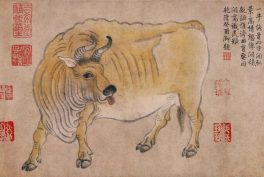Snake in East Asian Art: Happy Lunar New Year!
The 2025 Lunar New Year, begins on January 29th. This is the Year of the Wood Snake, sixth animal of the Chinese zodiac, known for wisdom and intuition. Let us take a look at some of the East Asian art history that celebrates this awesome animal!
Candy Bedworth 28 January 2025


















